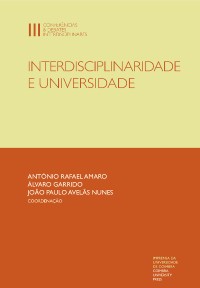Please use this identifier to cite or link to this item:
https://hdl.handle.net/10316.2/40063| DC Field | Value | Language |
|---|---|---|
| dc.contributor.author | Cova, Tânia F.G.G. | |
| dc.contributor.author | Almeida, João A. S. | |
| dc.contributor.author | Pais, Alberto A. C. C. | |
| dc.contributor.author | Formosinho, Sebastião J. | |
| dc.date.accessioned | 2016-11-23T10:36:59Z | |
| dc.date.accessioned | 2020-09-08T15:52:19Z | - |
| dc.date.available | 2016-11-23T10:36:59Z | |
| dc.date.available | 2020-09-08T15:52:19Z | - |
| dc.date.issued | 2016 | - |
| dc.identifier.isbn | 978-989-26-1238-6 | |
| dc.identifier.isbn | 978-989-26-1239-3 (PDF) | |
| dc.identifier.issn | 2183-1610 | |
| dc.identifier.uri | https://hdl.handle.net/10316.2/40063 | - |
| dc.description.abstract | This study aims to characterize the fiduciary basis of scientific knowledge at the level of European countries and the rest of the world, in terms of the theory of tacit knowledge of Michael Polanyi. From the base Essential Science Indicators, and resorting to standard chemometrics methods a “cultural geometry” for different countries is established. Cultural marks in science are quite evident which can be interpreted in terms of a Principal Component Analysis with two principal components (PC): “social function of science” and, on a smaller scale, “religious cultures”. The importance of cultural differences in Europe and its amplitude is then discussed in terms of the effects of their negligence within the monetary union, the euro, by studying the temporal evolution of these indicators between 2007 and 2013. | eng |
| dc.description.abstract | O presente estudo visa caracterizar as bases fiduciárias do conhecimento científico a nível de países europeus e do resto do mundo, em termos da teoria do Conhecimento Tácito de Michael Polanyi. A partir da base Essential Science Indicators, por métodos de quimiometria estabelece-se uma “geometria cultural” para os diferentes países. São bem evidentes as marcas culturais da ciência que, mediante uma análise de componentes principais (PC), consegue ser interpretada em termos de dois PC: “função social da ciência” e, de menor amplitude, “culturas religiosas”. A importância das diferenças culturais na Europa e da sua amplitude é seguidamente discutida em termos dos efeitos da sua negligência a nível da união monetária do euro, mediante o estudo da evolução temporal destes indicadores entre 2007 e 2013. | por |
| dc.language.iso | por | - |
| dc.publisher | Imprensa da Universidade de Coimbra | por |
| dc.relation.ispartof | http://hdl.handle.net/10316.2/40030 | por |
| dc.rights | open access | - |
| dc.subject | tacit knowledge | eng |
| dc.subject | Michael Polanyi | eng |
| dc.subject | chemometrics | eng |
| dc.subject | European science | eng |
| dc.subject | Essential Science Indicators | eng |
| dc.subject | Principal Component Analysis | eng |
| dc.subject | Euro | eng |
| dc.subject | conhecimento tácito | por |
| dc.subject | Michael Polanyi | por |
| dc.subject | quimiometria | por |
| dc.subject | ciência Europeia | por |
| dc.subject | Essential Science Indicators | por |
| dc.subject | Análise de Componentes Principais | por |
| dc.subject | Euro | por |
| dc.title | Uma visão das culturas do mundo através da ciência: o papel do conhecimento tácito | por |
| dc.type | bookPart | por |
| uc.publication.firstPage | 71 | - |
| uc.publication.lastPage | 95 | - |
| uc.publication.location | Coimbra | por |
| dc.identifier.doi | 10.14195/978-989-26-1239-3_2 | - |
| uc.publication.digCollection | PB | por |
| uc.publication.orderno | 2 | - |
| uc.publication.area | Ciências Sociais | por |
| uc.publication.bookTitle | Interdisciplinaridade e Universidade | - |
| uc.publication.manifest | https://dl.uc.pt/json/iiif/10316.2/40063/205451/manifest?manifest=/json/iiif/10316.2/40063/205451/manifest | - |
| uc.publication.thumbnail | https://dl.uc.pt/retrieve/11082008 | - |
| uc.publication.parentItemId | 54648 | - |
| uc.itemId | 69106 | - |
| item.fulltext | With Fulltext | - |
| item.grantfulltext | open | - |
| Appears in Collections: | Interdisciplinaridade e Universidade | |
Files in This Item:
| File | Description | Size | Format | |
|---|---|---|---|---|
| uma_vis_o_das_culturas_do_mundo_atrav_s_da_ci_ncia_.pdf | 958.28 kB | Adobe PDF |  |
Items in DSpace are protected by copyright, with all rights reserved, unless otherwise indicated.
